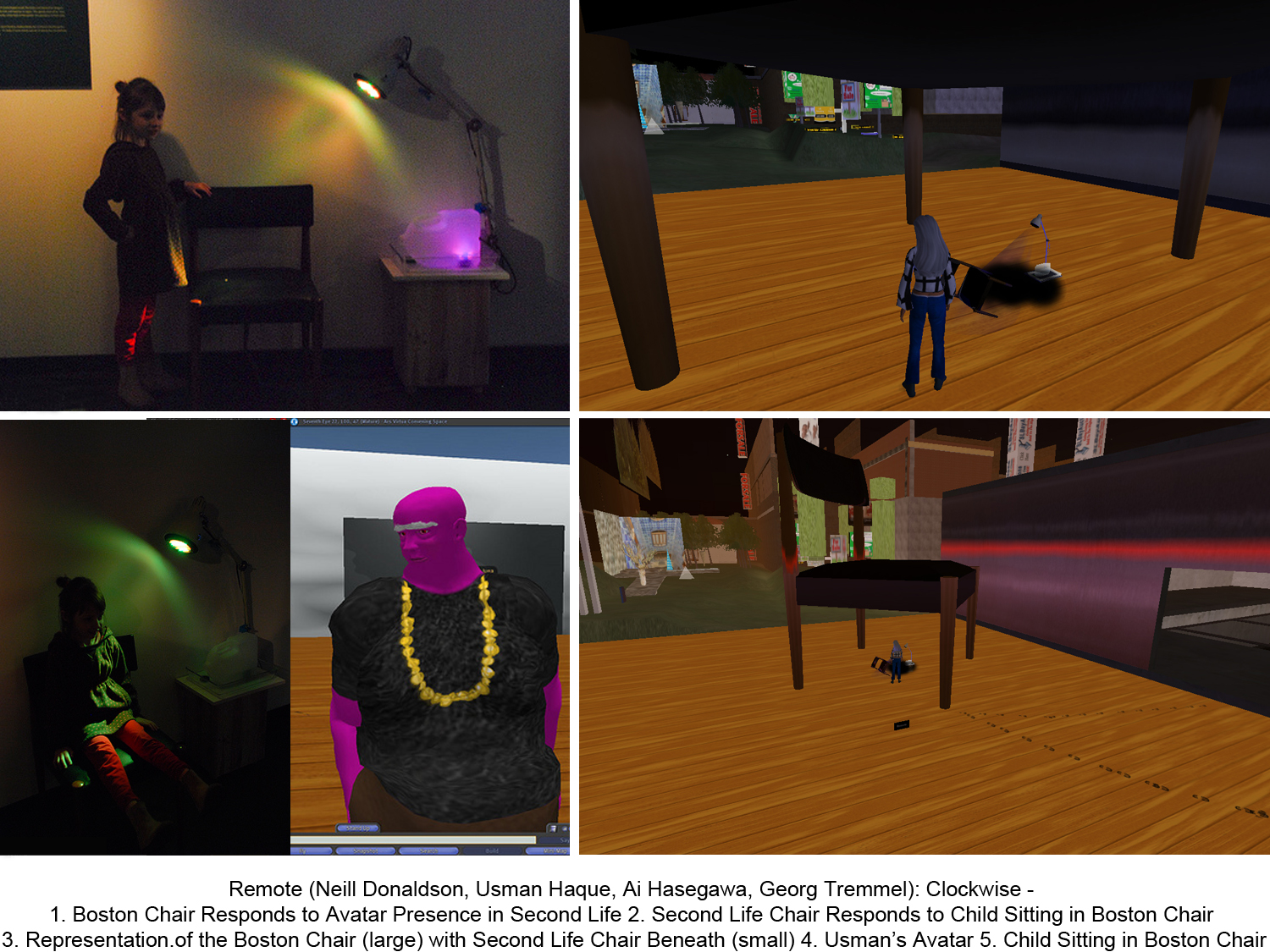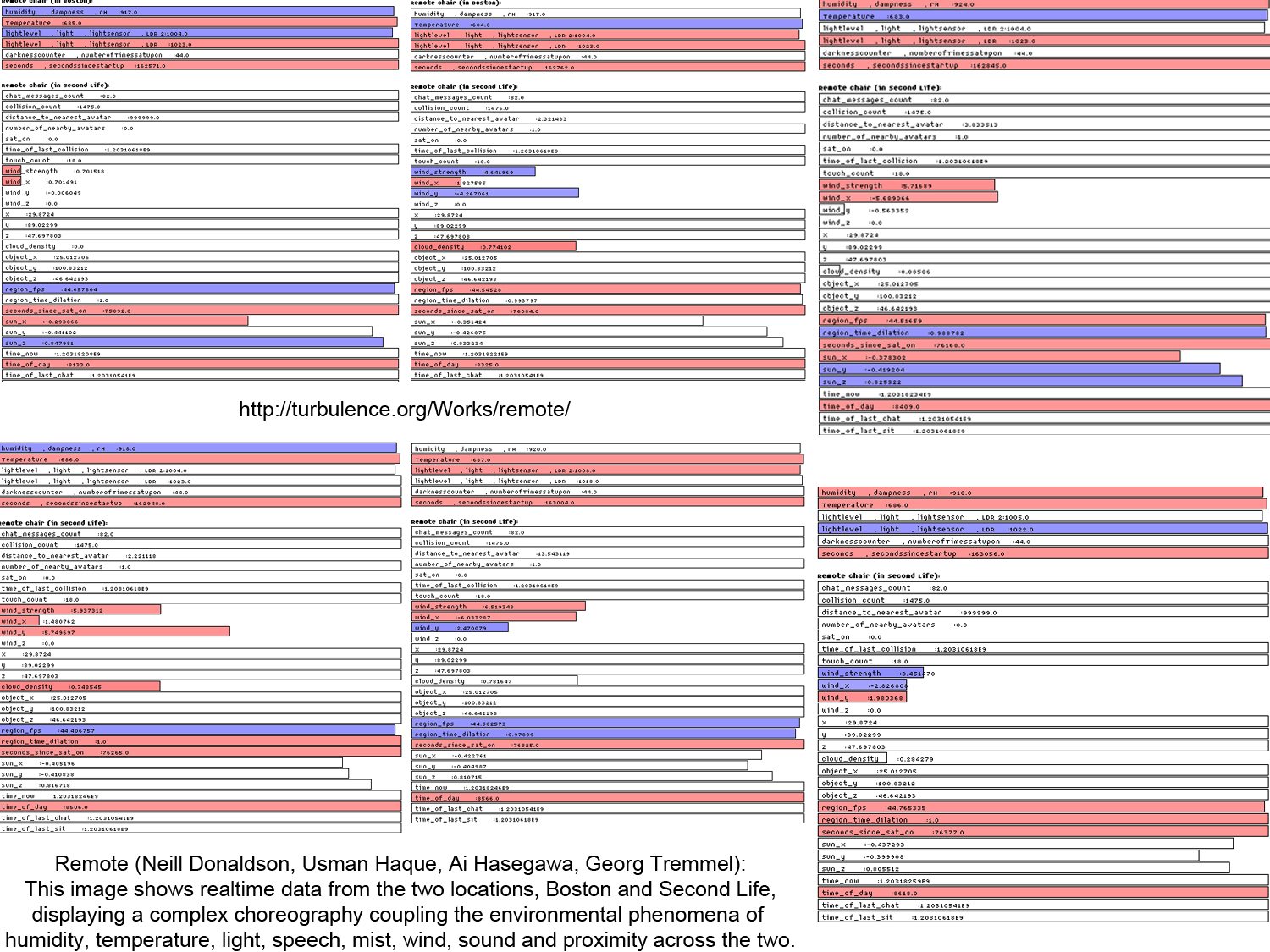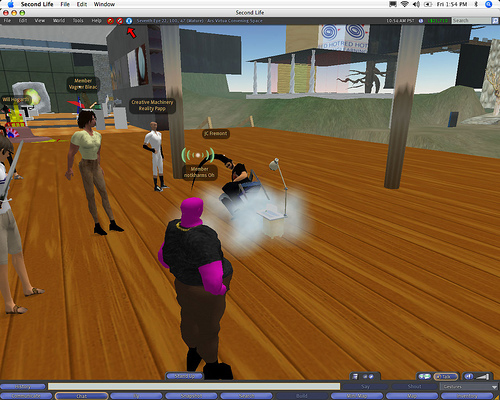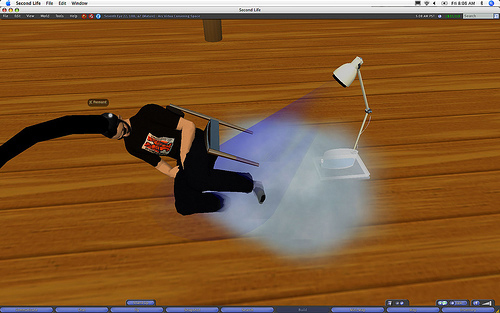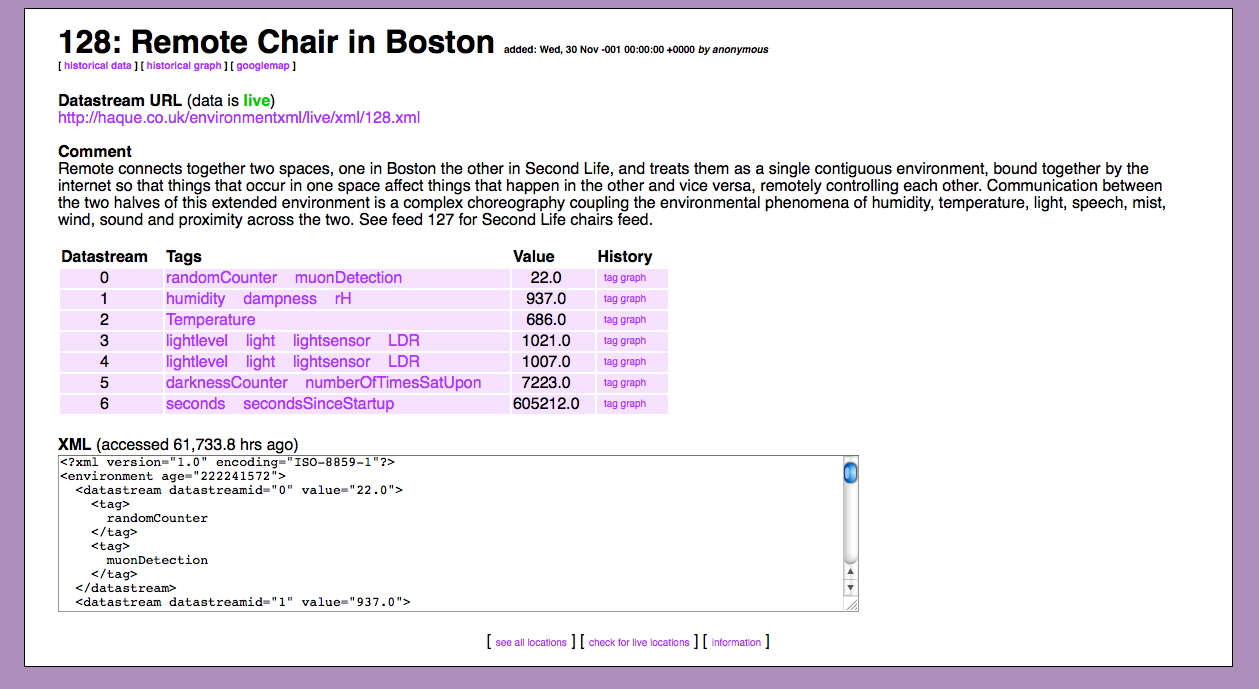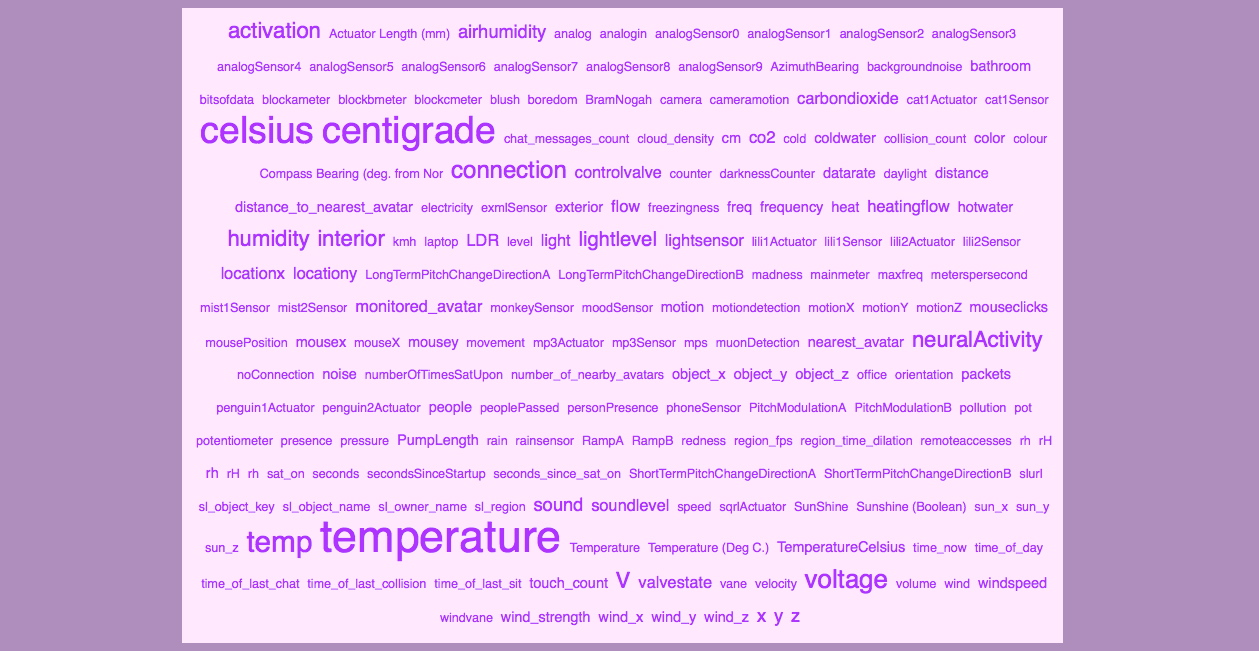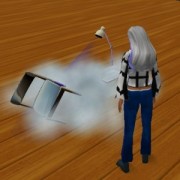Remote
Supported by Andy Warhol Foundation for the Visual Arts
Remote connected the Huret & Spector Gallery (Boston) and Ars Virtua Gallery (Second Life), treating the two spaces as a single contiguous environment bound by the Internet (Turbulence.org). The Boston installation consisted of a chair, table, lamp, and dish of water outfitted with sensors and actuators. An identical installation was built in the online, three-dimensional synthetic world, Second Life (SL). Communication between the two installations was a complex choreography coupling the environmental phenomena of humidity, temperature, light, speech, mist, wind, sound and proximity across the two.
These phenomena responded to the presence of physical bodies (Boston), and avatars (SL). For instance, as humidity around the chair in Boston increased, the amount of mist around the SL chair increased; the more people sat on the Boston chair, the taller the SL chair became. Alternately, as the number of avatars near the chair in SL increased, the Boston lamp got brighter and brighter, etc. The idea was that each system responded in real time to the presence of people, so that people in Boston could “feel” the presence of avatars in Second Life, and vice versa.
TAXONOMY
Data | Durational | Hybrid | Installation | Internet of Things | Mixed Realities | Networked | Physics | Second Life | Systems
REQUIREMENTS
Browse the archive.
MEDIA & ACHIEVEMENTS
Mixed Realities: An International Networked Art Exhibition | Raymond Liddell | Art New England
McQuaid, Cate. Most illuminating (in Capturing the overlooked), Boston Globe, Boston, Massachusetts, August 20, 2008.
Pachube, Patching the Planet: Interview with Usman Haque | UgoTrade
Remote | One in Three Chairs | Compiled by Jo-Anne Green
Interactivity and Agency in Real Time Systems | Jo-Anne Green
ADDITIONAL NOTES
Remote connected together two spaces, one in Boston the other in Second Life, and treated them as a single contiguous environment, bound together by the Internet so that things that occurred in one space affected things that happened in the other and vice versa — remotely controlling each other.
Communication between the two halves of this extended environment was a complex choreography coupling the environmental phenomena of humidity, temperature, light, speech, mist, wind, sound and proximity across the two. The object in Boston appeared to be a seat; but, experientially, the Second Life space appears to be inside the seat. A similar alteration of scale occurred in the other direction.
Visitors to the Boston space and the Second Life space had to negotiate to achieve goals: e.g. by sitting down, breathing, touching, knocking, colliding. The environmental data of both spaces was publicly available in realtime via the EnvironmentXML repository, enabling others to build devices and spaces that connected directly to both Boston and Second Life.
The intention was to explore an architecture that was resolutely “human” (in the sense of being inhabited, configured and determined by its occupants) yet context-free (because it does not privilege geographical location).
The piece was inspired by Joseph Kosuth’s One in Three Chairs. Haque wrote:
Imagine that hidden underneath the chair in Boston is a chair in Second Life (SL). But under the big chair in SL is a smaller chair (which looks a lot like the Boston chair). So under the SL small chair is the Boston chair, etc.
Boston’s effect on Second Life:
- as humidity around the chair in Boston rises, the amount of mist around the SL chair increases
- as the light level falling on the Boston chair decreases (for example when you sit on it), the fog in SL gets darker
- as the temperature rises in Boston, the lamp in SL changes from blue to red
- as the light level on each side of the Boston chair changes (e.g. if you sit on it and wiggle from side to side), the SL chair starts to wiggle from side to side too
- the more times you sit on the Boston chair, the taller the SL chair becomes
- as time progresses in Boston, the SL big chair slowly rotates
Second Life’s effect on Boston:
- as the number of avatars near the chair in SL increase, the Boston lamp will get brighter and brighter
- when someone sits on the SL small chair, the mist machine in Boston switches on
- if someone starts chatting near the SL chair, the lower blue fan in Boston starts blowing and pushes out the mist (if it’s switched on… which means only if someone is sitting on the SL small chair!)
- every time an avatar collides with underside of the SL big chair, the Boston chair starts knocking underneath
- every time an avatar touches the SL big chair, it changes the colour of the Boston lamp
- as the wind in Second Life increases speed, the upper blue fan in Boston blows more strongly….

